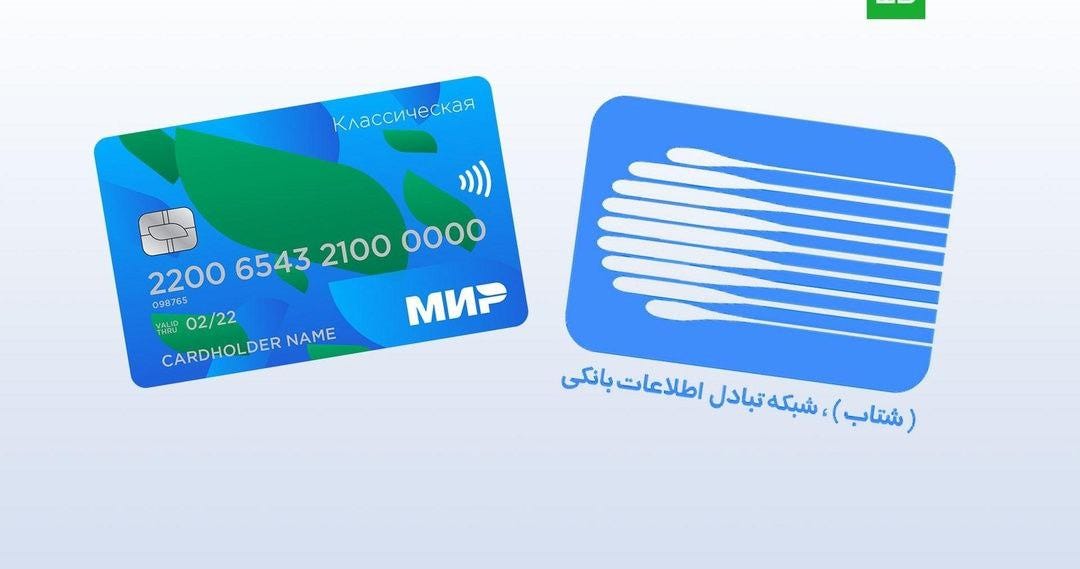Russia Links Payment Network with Iran, Cementing BRICS Financial Integration in a Push for Dedollarisation
BRICS is deploying its competing financial architecture to the region to undermine the West's financial hegemony.
Russia’s latest move, linking its Mir payment network with Iran’s Shetab payment system, not only enables Iranian tourists to withdraw roubles at Russian ATMs but, more importantly, cements the new, BRICS-aligned payment network independent of Western financial architecture. The linkage between Mir and Shetab serves as an essential building block for larger-scale economic integration, especially for entities like BRICS and the Shanghai Cooperation Organisation (SCO), as they work to push for dedollarisation.
The financial alliance between Russia and Iran could be seen as a direct response to mounting Western sanctions, which exclude both nations from the international SWIFT financial messaging service. Iran, which has been cut off from SWIFT since 2018 after the US abandoned the 2015 nuclear deal, has faced significant challenges in transacting internationally. Russia's Mir system, developed after Western sanctions hit in 2014, aims to provide an international solution for sanctioned nations.
An Expanding Financial Network
The Russia-Iran partnership is just one piece of a more ambitious puzzle. In 2022, Russia’s Central Bank partnered with the UAE’s regulators to create a joint payment system using the digital rouble, marking the UAE as a strategic participant in Russia’s regional financial architecture.
Similarly, Türkiye, a country considered for BRICS membership, partially shifted its payments for Russian gas to roubles in 2022 and, last year, announced plans to launch the Rebit Kart, a joint payment system allowing Russian tourists to conduct transactions in Turkey through a mobile app.
Egypt, one of the world’s largest wheat importers, linked its Meeza card network to Russia’s Mir system in 2022. For Egypt, facing a shortage of foreign currency reserves, this connection offers a way to reduce its dependence on the dollar by using roubles for essential transactions, such as importing Russian commodities.
Sudan, another African country, is currently in talks with Russia to settle bilateral trade in their local currencies to strengthen economic ties and reduce reliance on foreign currencies. Though official data is scarce, their trade is estimated to reach $400 million to $500 million annually.
Meanwhile, Syria, a country heavily sanctioned by the West, has shown a strong interest in joining the Mir network, underscoring Russia’s role in providing alternatives to Western systems for countries ostracised from traditional financial markets.
In addition, Russia’s financial network now encompasses Belarus, Armenia, Cuba, and Kazakhstan, all of which have joined the Mir payment system. For these countries, the Mir network provides a pathway to economic activity that bypasses dollar-based systems, offering a resilient financial option for nations subject to Western sanctions.
BRICS Pay: A Global Alternative
Since the Ukraine war erupted in 2022, Russia’s financial alliance with China has grown stronger. Today, they primarily trade in roubles and yuan, bypassing the dollar.
However, the two countries have a much bigger ambition: to build a global alternative financial system that effectively executes dedollarisation. This is why the latest BRICS summit introduced BRICS Pay, a cross-border payment initiative specifically designed to reduce reliance on traditional Western financial infrastructures. By providing an alternative, BRICS Pay seeks to help countries circumvent Western sanctions and currency restrictions.
This alternative payment system also challenges the Abraham Market, the US-backed initiative fostering Arab-Israeli economic ties. The Abraham Market aims to create a Western-aligned economic bloc across the Middle East, a goal at odds with Russia’s efforts to build its own bloc in the same region.
By expanding both the Mir payment network and BRICS Pay, Russia and China are setting the foundation for a BRICS-aligned payment bloc that could hedge countries against Western sanctions and achieve financial independence.




